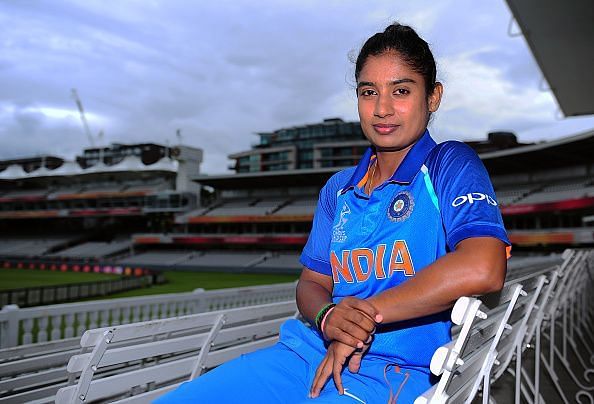
How would you remember Mithali Raj?
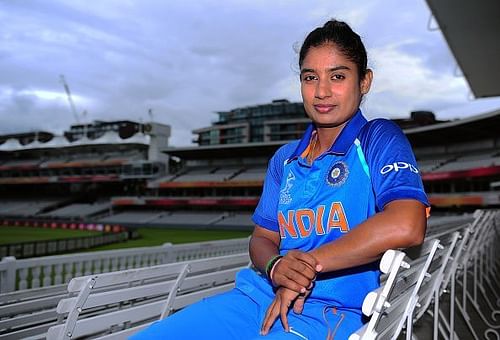
There are usually a lot of mundane TV commercials that are repeatedly broadcast between overs in a major cricket event, and the 2017 Women's World Cup was no different. One particular ad, however, caught my eye; it portrayed an everyday Indian woman breaking stereotypes and bustling her way past the shackles of patriarchy. This was a woman fulfilling the roles generally perceived as 'masculine' by society, much like India's female cricketers were doing on the field.
Evidently, the idea behind the advertisement was to showcase how the Indian woman has liberated herself from the oppressive hands of men. Women can now see 'eye-to-eye', and they don't need to compromise - #SamjhautaNahin was the hashtag used for the campaign.
If only that was all there was to it. The product that the advertisement intended to sell, wait for it, was a beauty soap, which is purported to enhance how a woman looks. Cue the sight of Indian men drooling over Smriti Mandhana's appearance, completely ignoring her brilliant back-foot punches.
But you get the feeling that things are on the verge of changing. India women, at the moment, have reached the zenith of their history. The Prime Minister of the country is waxing eloquent about them, different state governments are giving them jobs and rewards, and the media has found ways to portray itself as the guardian of their trade.
And yet, during the press conference upon arrival from London, when India captain Mithali Raj was asked whether the reward of Rs. 50 Lakh to each member of the team was sufficient and whether there were other demands from the team's side, she was quick to mention that she'd been playing the game when there was no money and no press conferences, and that this question should be asked to those who are new to the side.
Being a journalist, I could make out the question's intended purpose, and I could also appreciate Mithali's ability to keep a straight face while answering dodgy questions. Mithali has had a career long enough to separate the masqueraders from the loyalists, and with the latter too few in number, the woman knew that the dust would settle soon.
That question could have been asked to the kid who wanted a Mandhana jersey, or the 9-year-old girl who told Mamatha Maben, the former India captain, that she'd play alongside Mandhana. Perhaps those kids would have given the answer that the journalist wanted to smudge out. But not Mithali; not someone who, in Jarrod Kimber's words, could also have been 'too old for this shit.'
But she knows that kids of the future would look at the money, and hence she's been calling for a women's IPL. Any which way that may bring more girls towards the game.
That the idea is still a far-fetched one, not just in the BCCI's words, but also because the base of women cricketers in India isn't wide enough to have enough players for such a tournament, is evident.
For instance, 9 out of the 15 members of the India squad that featured in the World Cup play for the Railways. It speaks not only of the lack of a resource pool at the domestic level but also of a lack of competition to get into the side.
Whether there would be a women's IPL or not, whether India's next bilateral series would be broadcast or not, and whether there will be another 2017 or not, would not, I assume, in any way, affect Mithali. For she has lived her days reading Rumi, struggling through the ladder, becoming the best bat in the world, and, perhaps, reading Rumi again.
*****
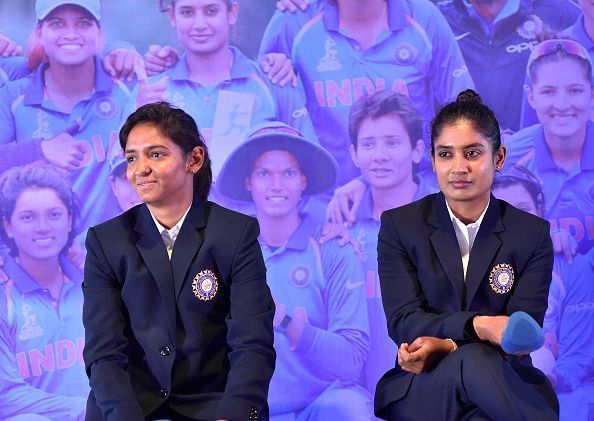
Mithali's legacy is nothing but an extension of how the loyalists -- and there are a few of them -- have gone about their custom of making the girls play. Making them play for the country had been a distant dream for quite some time, and a dream snatched away thereafter.
It was hence fitting enough that I spoke to Shanta Rangaswamy, one of the founding architects of the women's game in India -- for the uninitiated, a previously-written article on this platform would tell you why -- and tried to foresee through her eyes as to where does Mithali go from here and what does she leave behind.
"I personally feel watching Mithali play, she has at least two more years left in her. She's said that it is her last World Cup, but she hasn't said that she is going to retire. I don't want to jump the gun, but at least for two more years she can serve the game, if not more," Shanta says, her voice holding up at first and then coming through over call.
At 63 years of age, and with more than three decades of service to women's cricket, I had to be patient enough to listen to her side of the story, all the while blaming myself for being ignorant enough to not know who she was.
"Somewhere, all good things have to come to an end. She's pushing 35, so I don't know, but given her penchant for fitness, she may well continue. But the day she decides to call it a day -- I don't see the selectors asking her to go, because if not the best, she's definitely one of the best -- there'll be a big void. It will take a lot of time for someone to step in those shoes," she adds.
Mithali has 6190 ODI runs against her name, and the next highest run-scorer for India who's still active in international cricket, Harmanpreet Kaur, is 4065 runs behind. Kaur might be the captain-in-waiting, she's already taken over the reigns from Mithali in T20 cricket, and has, in essence, become the poster-girl, if I may be allowed to term her as such, of the women's team since that 171* against Australia.
However, Mithali has played 118 more matches, has led India in two World Cups, and had made her debut a decade before Kaur did. The shoes could not have been any bigger.
"I have been there since the day Indian women's cricket started and I can say that she is the best batter ever, miles ahead of everyone else. Sandhya Agarwal came close, she was very good in Tests, but in one-dayers, she was slow. But Mithali, she has the ability to adapt," Shanta says, lauding Mithali as 'the most successful captain' of India.
A Test average of 51 almost equalling the ODI average of 51.58, and a T20I average of 37.95 to go along with those make her the Virat Kohli-equivalent -- now that the narrative of 'men vs women' and not 'women vs whatever has been stopping them' has been established, as the advertisement so subtly puts across -- of the women's team.
Hence, it is a pity, really, that India's moment of glory -- actually, one of the several moments of glory, but the only one this accentuated -- has come towards the fag end of her career. It should be more of a closure for Mithali than glory, though, for there isn't much left for her to achieve. A World Cup? Yes, but she isn't playing the next one. A World T20, maybe? Maybe, but that's Kaur's burden now.
Maybe her response to the journalist, directing the question to the younger players, was her way of passing the baton. Maybe she wanted the younger lot, which has come up in the era of the IPL and the BBL, to be a bit more capitalistic than nationalistic, for she has seen how far nationalism takes Indian women who want to play cricket.
Maybe she understands that for India to find the next Mithali, things have to change.
*****
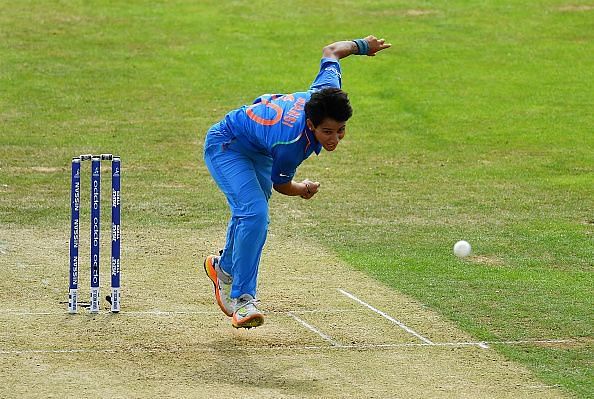
Mamatha Maben, former India captain, and a veteran of 40 ODIs was a part of that nationalistic era. I could call the era as such because there was no or very little money to play for, even lesser if you're not playing for India.
Maben last played for India in December 2004, almost two years before the BCCI took over women's cricket in India, but she was there long enough to watch a young Mithali make her debut and thrive under her captaincy.
"I first saw her (Mithali) during one of the nationals we were playing. She would have been just 11 or 12 then... she was early into the domestic circuit, and my then captain Promila Bhat told me, 'Just look at this girl, she is the one for the future. Everyone's talking about her.' And I look around and see this small girl walking around. That was when I first saw her," recalls Mamatha.
"Later in the year 1997, before the World Cup, Mithali had gotten herself picked for the Indian camp and Promila was telling me about how much time she had to play the ball. But somehow the selectors didn't pick her up because she was a little raw," she adds.
Mithali was only 15 years old when the 1997 Women's World Cup was held in India. Cricket was then administered by the Women's Cricket Association of India (WCAI), which the BCCI had authorized to run women's cricket in the country while maintaining a step-child attitude towards the women's game that continued until 2006 when Sharad Powar finally decided to own up.
"But Promila told me, 'Mamatha, I wish they pick her up.' Because though she was young, she stood out. In 1999, she finally made the breakthrough, while she was still 16+ or something (17)."
She could have made her debut as a 15-year-old and Sachin Tendulkar would have been the second-youngest to have debuted for India. Mamatha also had the privilege to watch Mithali grow from a raw 15-year-old to a 19-year-old who hit a double hundred in Tests from close quarters.
"Later on, I was so fortunate -- I am very good family friends with Mithali -- to have lived in Mithali's house when we used to play league cricket in Hyderabad, and I used to see the regime there," Mamatha remembers.
"From her food to practice sessions, everything used to be monitored and regimented, and for me, it was something different. I played only because I happened to play. I had never imagined that I would play for India until very late in my career. Because when I started playing, I never knew women played cricket, we used to play on the roads.
"A friend introduced me to cricket and for the first five years, there were no international tours. So I come from a very different background than Mithali and then I was exposed to this... the whole family wanted her to be something," she adds.
This is a departure, in that Mithali and her parents knew what the child wanted to be, as opposed to Mansi Joshi, who until recently had worries about getting a government job despite being a part of a World Cup squad that did what it did in England.
Perhaps it will take some time for the feeling to sink and for Joshi to realize that at least for now, her job woes have been rendered irrelevant. But it wasn't so for Mithali or her parents, to such an extent that even know when Mamatha visits their place, the talk generally revolves around cricket.
"I have seen myself how the mother and father have sacrificed. Whenever we go there, the family only talks cricket," Mamatha says.
"There's one thing that the parents wanted her to play, but Mithali herself was so keen, and during the days I used to captain her at South Zone and sometimes at the Railways, the kind of thoughts she had in her mind... where she wanted to be, what she wanted to become, the clarity of thought was visible. So it doesn't come as a surprise to me that she's reached where she's reached.
"It didn't happen overnight. It has been close to 20 years. It has been 18 years since her debut."
*****
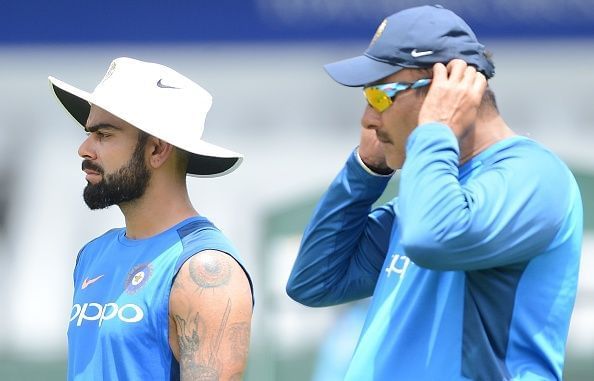
So I ask you now. How would you remember Mithali Raj? Would you remember her as a nationalist, albeit by circumstances and maybe not choice, in the era of professionals? Would you remember her as the only figure from the women's game that helped you give it a place in the legion of sports?
Or would you remember her as the captain who, being an element of schadenfreude, helped you despise the men's game and carve out a crevice in the perceivable dirty affairs of the BCCI and establish a sense of purity and excellence despite adversity?
Different analysts may have different opinions about India's world cup campaign. The agenda of 'women vs men' is a hidden one but the echoes of it were felt even before the tournament had begun when Mithali snubbed a journalist who dared to ask who her favourite male cricketer was.
And yet, at the toss as well as the press conferences, she exhibited confident humility -- her arms behind her back, eyes generally lowered, albeit looking at the pitch, when Ian Bishop asked her questions, and not looking directly into the camera for long at the pressers.
Quite in contrast to Kohli, who answers questions with a straight face, doesn't mince words and chooses the personnel of his own choice. Kohli has chosen to be the bully because that's the only way to not get bullied. And that reflects on his team as well.
For years, women's cricket has been bullied under the burden of its own weight, and now that it has found the much-needed impetus to punch its way above, Mithali has come about as the pacifier in the times of charged rendezvous mixed with stupefying emotions.
These women may need a Kohli-like figure, should the times change and should they, in no contrast to their male counterparts, get under the hammer of the media, the BCCI and the rigours of international cricket. Harmanpreet looks like such a figure, although soothsaying and predictions mustn't be done in cricket.
Until then, they're fine with Mithali, for she knows that more than the agendas and cash rewards, getting her team on the field after London is still a task, and when the glory days subside, the going is likely to get tough.